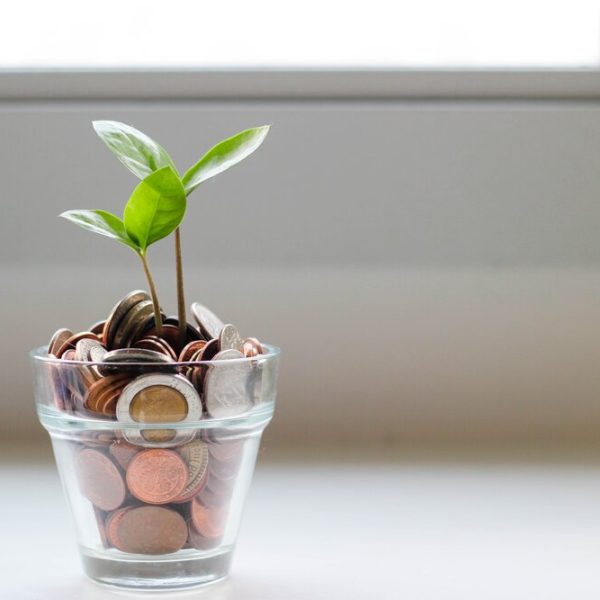So you’re ready to start investing but you’re not really sure what that even means or where to start.
I’ve got you!
In this article I’m going to explain the very basics of what the stock market is and then talk about some of the different kinds of investment products you can buy.
We’re not going to be getting into how you buy them just yet, for now just try to understand what the different kinds are.
Unfortunately, there is no one-size-fits-all to investing.
We all live in different cities, we all have different lifestyles and we all have different goals. The investment products you choose might be totally different from your parents, your neighbors or your friends.
So, what’s right for you? Let’s start from the basics.
What is the stock market?
The stock market that we all hear so much about (just smile and wave if you don’t know) literally just refers to the overall buying and selling of shares through the stock exchanges.
What’s a share, you might ask?
Think of the value of a company being broken down into tiny tiny bite sized pieces, we call these “shares”. Once a company has listed shares of their stock on an exchange, investors like you and me can buy and sell these shares. When the value of a company goes up, the price of the share goes up and vice versa.
So around the world, there are different stock exchanges. If you’re Canadian like me, you’ve probably heard of the Toronto Stock Exchange (TSX), the New York Stock Exchange (NYSE) and maybe the NASDAQ. The buying and selling of shares happens through one of the stock exchanges.
So you’ve probably seen in the movies a parade of men in suits and hats with moustaches yelling at each other while papers fly around the room. Way back when, in order to buy or sell shares, you needed to physically go to the stock exchange and place an order. Wall Street is a cluster of financial institutions and investment bankers because they set up shop to be physically close to the stock exchange that was on that street!
Some still trade on the floor but of course today you can place an order online. You can participate in the buying and selling of stock/shares from the comfort of your own home.
You can also pay a person or a company to invest for you so please do not worry if you really don’t want to be investing on your own. I’m still not investing on my own yet! But I did want to educate myself and have an idea of what investment products were going to be right for me.
So lately you’ve probably heard on the news about how the Dow Jones is plunging. All they’re talking about is the overall 30 largest companies listed on New York Stock Exchange and the NASDAQ in the United States. These are the big companies like Coca-Cola, McDonald’s, Apple, Microsoft, Nike, etc.
The Dow Jones index is just used as a marker to explain what’s happening in the U.S. market because it’s hard to track every single company at a given time. If the Dow Jones is down, the top 30 companies in the U.S. are not doing so well and so the U.S. economy is likely not doing so well and vice versa.
Now that we know a bit more about what the stock market is, let’s find out what products we can actually buy and sell. Shall we?
In this article I’m just going to cover the basics of some of the most common investment products:
-
Individual stocks
-
Mutual funds
-
Index funds
-
Exchange-traded funds
-
Bonds
-
Real estate
-
Guaranteed Investment Certificates
Let’s get into it!
1. Individual Stocks
One of the ways you can invest is by buying single shares of companies. When you buy a share, you become what is called a shareholder and actually own a small piece of that company.
So if the company increases in value, your piece of the company also goes up in value. However, if the company decreases in value, your piece of the company also decreases in value.
We all know a guy who knows a guy who has a friend that now owns a private island because they got lucky on one move in the stock market.
Individual stocks are extremely volatile, meaning the share prices can jump and fall extremely quickly and without warning. I’m not doubting that by playing with individual stocks you can make a lot of money, but you also have to be prepared to potentially lose a lot of money too if you’re not doing it right.
To put it into perspective, thousands of professional analysts are advising the big investors on what stocks to buy and sell every single day. Stock prices usually reflect the big companies and their opinions. You’re just trying to ride that wave.
Stock picking is not a game that I’m ready to play but everyone is different. If you can actually put in the time to read financial statements and find out which companies are under or overvalued, this might be a good option for you.
Start small and go from there!
Again, you can also hire someone to pick stocks for you, just be aware of the fees you will be paying.
2. Mutual Funds
Mutual funds are the most popular investment product used by Canadians today.
If you’ve already started investing by walking into your bank and talking with a financial adviser, you’re most likely invested in mutual funds.
A mutual fund is a fund you buy into that holds a handful of individual stocks. This is what makes it so easy for us regular folks to get into the stock market.
Mutual funds are usually actively managed, meaning that someone is in charge of what stocks are held within that fund. The fund manager will buy and sell stock within that fund to try and beat the market (which is very rarely successful by the way).
A mutual fund is an easy way for beginners to get started in investing, but for Canadians, it is far from a good investment strategy for the long term. Let me tell you why.
More effort and manpower to actively trade stocks means higher fees for you.
The truth is, Canada has some of the highest fees in the world for mutual funds. While the 2%+ fee might not seem like a lot right now, over time those high fees can eat away hundreds of thousands of dollars from your investment fund.
There is a huge problem with transparency in the financial industry, especially when it comes to mutual funds. A lot of the fees you pay are hidden from you on top of the 2%+ they are nice enough to tell you about. This really rubs me the wrong way.
When you purchase a mutual fund, you are putting your trust in a person (who you probably have never and will never meet) to be able to beat the market. Remember, this is really hard to do and these people get paid regardless if they make you money or not.
If you are a Canadian invested in mutual funds right now, don’t worry. Remember, it’s better just to start investing than to invest perfectly right off the bat.
Please take a close look at the fees you are paying as you’ll want to try to keep your fees below 1.00%. I guarantee you are paying more than 1.00% if you are investing with one of the big banks in Canada. Consider making a switch to some of the lower cost options in this article in the future.
However, if you really feel more comfortable having an active manager trying to beat the market, just be aware of the fees you are paying for the service you are getting in return.
3. Index Funds
An index fund is a type of mutual fund except it is not actively managed and it is made to track the market, not beat the market.
Index funds not being actively managed means that no one is actively buying and trading stocks within the fund on a daily basis like how traditional mutual funds are managed. This means lower costs for you.
You can purchase these through some of the major banks in Canada: Tangerine, CIBC, Scotiabank and TD to name a few. But you’ve likely never heard of these because as soon as you walk into the bank they try to push you on the higher cost mutual funds, am I right? I’m right.
Rather than having to go out and buy all the individual stocks for the top 500 companies in the U.S. (also known as the S&P 500), you can buy an index fund that is designed to track those companies performance. This makes low cost investing really easy!
Index funds are limited in how they are bought and sold but this is a good place to start investing. Once you’re ready to step your game up, exchange-traded funds will be there waiting for you!
4. Exchange-Traded Funds (ETFs)
An ETF is very similar to both index funds and mutual funds, only better. Is my bias showing yet?
You won’t have the unlimited potential to make loads of money like you would getting lucky on a stock, but ETFs still give you the potential to grow your money substantially over time.
When you purchase an ETF, you purchase a fund containing hundreds to thousands of different stocks or bonds, just like a mutual fund. So, purchasing ETFs gives you the ability to invest in many individual stocks all at once.
ETFs are also not actively traded so they are much lower cost to you, usually even lower than the cost of index funds. But similar to index funds, they are made to follow and track the market, not to try and beat the market. Slow and steady wins the race here.
So when you buy the ETF, you buy a fund with a bunch of different companies within it and just hold onto them. There is no active buying and selling of stocks within your ETF, the ETF itself is what is bought and sold on the stock market just like any one stock.
The fund is what it is and will increase in value as the companies held within it increase over time.
If one company tanks, your entire investment portfolio is not in the trash because that was only one out of hundreds or thousands of companies you’re invested in.
Woohoo!
So for me and the vast majority of people, low cost ETFs are the way to go. We can buy them at a low cost, sit on them for a long time and honestly forget about what is happening in the day-to-day market.
You can choose to be a Do-It Yourself investor here, but there are many options to pay a small fee and have someone else to take care of it for you.
This is how I invest and is exactly why I don’t care about the market crashing and bottoming out right now. I’m investing for the longterm and I know the market will rise again! If you’re like me and can trust the process over time, ETFs might be the way to go.
5. Bonds
Bonds are loans made out to companies, which can include governments, cities and corporations. Essentially, you are investing in someone else’s debt. Weird, I know.
The companies that borrowed money will agree to pay back the money given to them on a specific date plus interest in increments along the way.
You can buy and sell bonds on the stock market or you can just buy bonds and hold them to maturity, which is that specific date they said they would pay the money back.
If you are going to buy and sell bonds on the stock market, their value can increase and decrease like any stock on the market.
However, when you buy a bond and hold it to its maturity, you won’t need to care about the daily ups and downs of the value of the bond. You’ll get your money back plus interest unless the company defaults on the loan, which is unfortunately possible.
You can buy a bunch of bonds in a big fund in the form of mutual funds, index funds or ETFs to increase your diversification and decrease your risk.
Investors who buy stocks, whether that be in the form of individual stocks, mutual funds or ETFs, will usually buy bonds as well for further diversification.
This is because usually when stocks are doing well, bonds aren’t and vice versa. When interest rates go down, bond prices usually go up while the opposite is true for stocks as we’re seeing happen in front of our eyes right now.
Bonds usually pay out at a lower interest rate than stocks. Unlike stocks, you won’t benefit when the company’s value increases. But, you also likely won’t see a big loss when the company’s value decreases.
Think of stocks as a sailboat getting you where you need to go and think of bonds as the boats stabilizers. When waters get rough, the stabilizers are there to keep the boat from completely flipping and sinking.
6. Real Estate
When you think of real estate, you probably think about putting a downpayment on a home and physically buying a property. That is definitely an option for investing in real estate.
However, another option you might not be aware of is the option to buy real estate investment trusts (REITs).
If you can’t or just don’t want to buy an entire property on your own, you can invest in REITs to further diversify your investment portfolio. Remember, all diversification means is not to put all of your eggs in one basket.
With REITs, you can invest in buildings like shopping malls, office buildings, apartment complexes, even hospitals. Unlike buying and selling a property, you can buy and sell REITs on the stock market, which allows a larger audience to be able to invest in real estate.
REITs are also available in mutual funds or ETFs so you can buy a bunch all at the same time. You’ll definitely need to do some research first.
7. Guaranteed Investment Certificates (GICs)
GICs are exactly what they sound like, they are guaranteed investments. Banks and other financial institutions will offer a certain percentage upfront, usually between 1-3%.
Just like your personal bank account holding your chequing and savings account, the money in a GIC should be insured so you are guaranteed not to lose any money with these investments. The money you put in is safe, and you are guaranteed to get the interest they offered for a certain period of time.
GICs are most commonly offered anywhere from one year to five year terms. You are making a loan to a financial institution who will pay you your money back plus the interest agreed upon up front.
The 1-3% offered by GICs is a pretty low rate of return compared to the average returns you see with ETFs, for example. But they are another good form of stabilizers for your investment portfolio.
Some people would rather invest in GICs over bonds because they are guaranteed investments. I first started investing in GICs back in high school!
Know that sometimes your money is locked away for the time period you choose and you may not be able to access it during that period.
Let’s say you put $2,000 into a five-year GIC at some set interest rate. You might not be able to access that $2,000 for 5 years. But, at the end you are guaranteed to get back your $2,000 plus the interest you accrued over that time.
Sometimes, if you need to withdraw your money before the set time period, you’ll lose out on all of the interest you’ve earned thus far. With that being said, you are guaranteed to receive back the money you initially put into the fund.
There is no risk here!
All In All
Before you start investing, you need to think very carefully about what your goals are and what your risk tolerance is. Your specific goals might not require you to take as much risk as you may think!
When will you be needing the money? What do you want to be able to do with this money in the future?
If you are investing for retirement 40 years down the road, you can take comfort in knowing that with a longer time frame, there is less risk. If you are investing for a down payment on a home or an event where you will be needing the money relatively soon, you might want to stay on the safer side of investing and stick to GICs and such.
Diversification is one of the most important aspects to investing. As I said before, all diversification means is not to put all of your eggs in one basket. You don’t have to pick one product and stick with it. You can buy a combination of all of the products mentioned in this article over time.
As we get older and gain more experience, we can start optimizing our investments for tax purposes etc. but the best thing we can do while we’re young is just to start somewhere!
“Investing should be more like watching paint dry or watching grass grow. If you want excitement, take $800 and go to Las Vegas.”
Related Articles
When Is The Best Time To Start Investing?
Disclaimer: I am not a certified financial planner or investment advisor. The ideas posted on this website are my own opinions on how I manage my personal finances. The content is specifically for educational and informational purposes and is not considered professional financial advice. Everyone’s finances work differently and you will have to do your own due diligence before making any financial decisions.
Pin it for later!









Leave a Reply